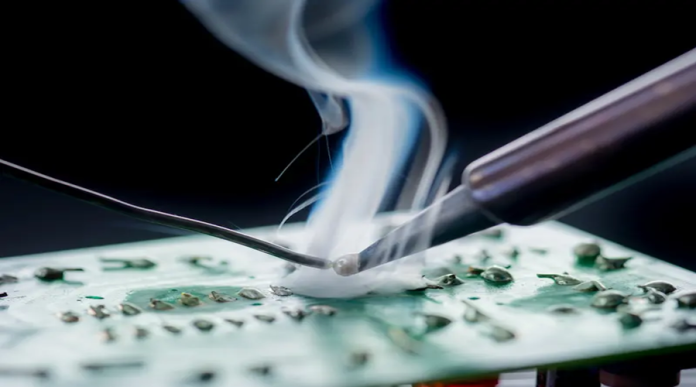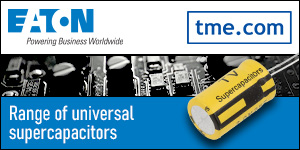Soft soldering is a process used to join metal components by melting a filler metal, known as solder, which has a low melting point, typically below 450°C (842°F). The solder forms a bond between the surfaces without melting the base metals. It is widely used in electronics, plumbing, and jewellery making due to its ability to create strong yet flexible joints. Unlike hard soldering or welding, soft soldering does not require extremely high temperatures, making it ideal for delicate workpieces.
How Soft Soldering Works
Soft soldering involves heating the joint area to a temperature sufficient to melt the solder but not the base materials. A soldering iron, torch, or another heat source is used to bring the solder to its melting point. When melted, the solder flows into the joint by capillary action and solidifies as it cools, forming a mechanical and electrical connection. The effectiveness of this process depends on the cleanliness of the surfaces, the proper use of flux, and the choice of solder alloy.
Soft Soldering Process
The soft soldering process follows several essential steps to ensure a secure and reliable joint:
- Surface Preparation: Before soldering, the metal surfaces must be cleaned thoroughly to remove any dirt, oxidation, or grease. This can be done using abrasive pads, chemical cleaners, or flux.
- Application of Flux: Flux is a chemical agent that prevents oxidation and helps the solder adhere to the metal surfaces. It is applied to the joint area before heating.
- Heating the Joint: A soldering iron or other heat source is used to heat the metal surfaces to the required temperature. The heat must be sufficient to melt the solder but not damage the components.
- Applying Solder: Once the surfaces are heated, the solder is applied to the joint. It melts and flows into the gap between the metals through capillary action, creating a bond.
- Cooling and Solidification: After the solder has flowed into the joint, the heat source is removed, allowing the solder to cool and solidify. Proper cooling ensures a strong and durable bond.
- Cleaning the Joint: Any residual flux or oxidation by-product should be cleaned off using alcohol or other cleaning solutions to prevent corrosion or electrical issues.
Soft Soldering Uses & Applications
Soft soldering is widely applied across various industries due to its versatility and ease of use. Some of its common applications include:
- Electronics: Soft soldering is extensively used in the electronics industry for assembling circuit boards, connecting wires, and securing components. It ensures reliable electrical conductivity while maintaining component integrity.
- Plumbing: In household plumbing, soft soldering is employed to join copper pipes, creating leak-proof connections. Lead-free solders are used to ensure safe drinking water systems.
- Jewellery Making: Soft soldering allows jewellers to join delicate metal pieces without compromising their structural integrity or aesthetic appeal.
- Automotive Industry: Automotive manufacturers use soft soldering for electrical connections in vehicles, ensuring durability and performance.
- Arts and Crafts: Artists and craftsperson utilize soft soldering for creating decorative metalwork, stained glass, and intricate designs.
Soft Soldering Advantages
Soft soldering offers several benefits, making it a preferred method for many applications:
- Low Operating Temperature: Soft soldering requires lower temperatures compared to brazing or welding, reducing the risk of heat damage to components.
- Ease of Use: The process is simple and does not require specialized training or expensive equipment.
- Cost-Effective: Soft soldering uses affordable materials and tools, making it an economical joining method.
- Good Electrical Conductivity: The soldered joints provide excellent electrical conductivity, making it ideal for electronic circuits.
- Reversibility: If necessary, soldered joints can be easily reworked or repaired by reheating the solder.
- Compatibility with Thin Materials: Soft soldering is suitable for delicate and thin metals that might be damaged by higher-temperature processes.
Soft Soldering Disadvantages
Despite its advantages, soft soldering has some limitations that must be considered:
- Lower Strength: Soft soldered joints are not as strong as brazed or welded joints, making them unsuitable for high-load applications.
- Limited Temperature Resistance: The low melting point of soft solder means that joints can weaken or fail at high temperatures.
- Flux Residue Issues: If not cleaned properly, residual flux can lead to corrosion or contamination in sensitive applications.
- Potential Toxicity: Some solder materials, particularly those containing lead, can be hazardous to health and the environment, necessitating the use of lead-free alternatives.
Conclusion
Soft soldering remains an essential technique in various industries, offering a balance of affordability, ease of use, and effectiveness. While it has certain limitations, its advantages make it a preferred method for applications requiring electrical conductivity, delicate metalwork, and low-temperature bonding. By understanding the process, applications, and considerations, professionals and hobbyists alike can make the most of soft soldering in their projects.








